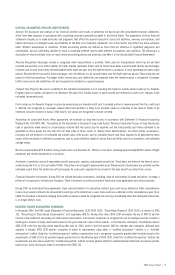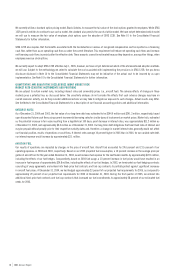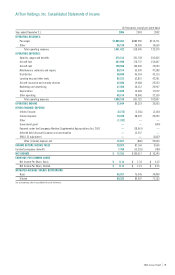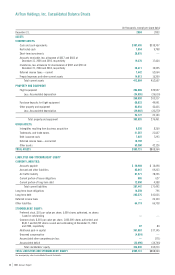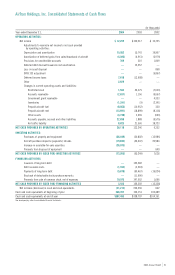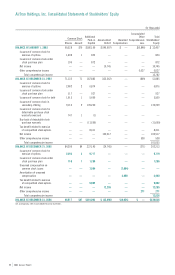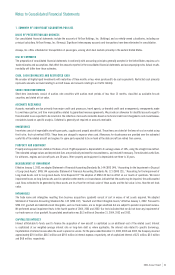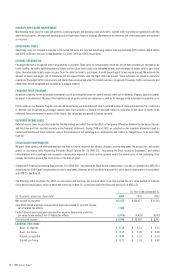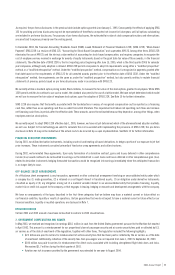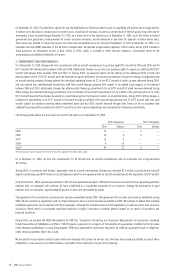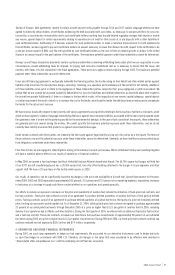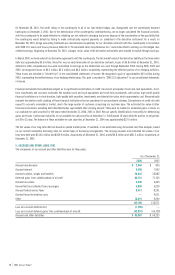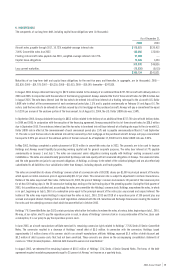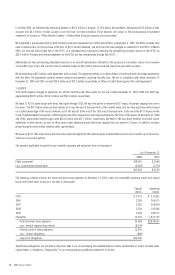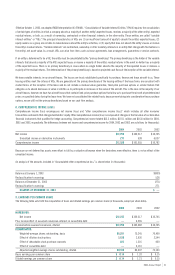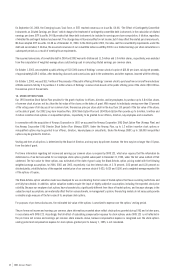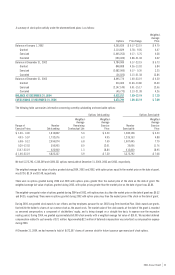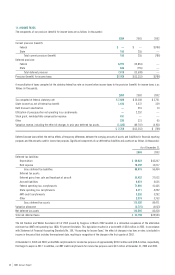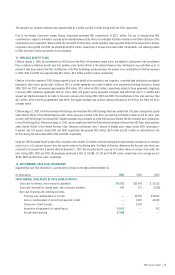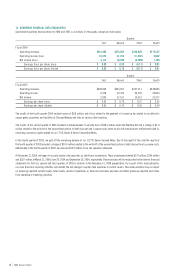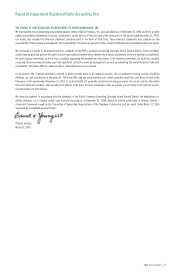Airtran 2004 Annual Report Download - page 27
Download and view the complete annual report
Please find page 27 of the 2004 Airtran annual report below. You can navigate through the pages in the report by either clicking on the pages listed below, or by using the keyword search tool below to find specific information within the annual report.
27
2004 Annual Report
Certain of Airways’ debt agreements related to certain aircraft-secured notes payable through 2014 and 2017 contain language whereby we have
agreed to indemnify certain holders of certificates evidencing the debt associated with such notes, as necessary, to compensate them for any costs
incurred by, or any reduction in receivables due to such certificate holders resulting from broadly defined regulatory changes that impose or modify
any reserve, special deposit or similar requirements relating to any extensions of credit or other assets of, or any deposits with or other liabilities of
such certificate holders. Additionally, if it becomes unlawful for such certificate holders to make or maintain the investment or credit evidenced by
the certificates, we have agreed to pay such certificate holders an amount necessary to cause the interest rate with respect to the certificates to be
a rate per annum equal to 4.88% over the rate specified by such certificate holders as the cost to them of obtaining funds in dollars in the United
States in an amount equal to the pool balance of the certificates. The maximum potential payment under these indemnities cannot be determined.
Airways’ aircraft lease transaction documents contain customary indemnities concerning withholding taxes under which we are responsible in some
circumstances, should withholding taxes be imposed, for paying such amounts of additional rent as is necessary to ensure that the lessor still
receives, after taxes, the rent stipulated in the lease agreements. These provisions apply on leases expiring through 2022. The maximum potential
payment under these indemnities cannot be determined.
In our aircraft financing agreements, we typically indemnify the financing parties, the trustee acting on their behalf and other related parties against
liabilities that arise from the manufacture, design, ownership, financing, use, operation and maintenance of the aircraft for tort liability, whether or
not these liabilities arise out of or relate to the negligence of these indemnified parties, except for their gross negligence or willful misconduct. We
believe that we are covered by insurance (subject to deductibles) for most tort liabilities and related indemnities as described above with respect to
the aircraft we operate. Additionally, if there is a change in the law which results in the imposition of any reserve, capital adequacy, special deposit
or similar requirement the result of which is to increase the cost to the lender, we will pay the lender the additional amount necessary to compensate
the lender for the actual cost increase.
We have various leases with respect to real property, and various agreements among airlines relating to fuel consortia or fuel farms at airports, under
which we have agreed to standard language indemnifying the lessor against environmental liabilities associated with the real property covered under
the agreement, even if we are not the party responsible for the environmental damage. In the case of fuel consortia at the airports, these indemnities
are generally joint and several among the airlines. We cannot quantify the maximum potential exposure under these indemnities, and we do not
currently have liability insurance that protects us against environmental damages.
Under certain contracts with third parties, we indemnify the third party against legal liability arising out of an action by a third party. The terms of
these contracts vary and the potential exposure under these indemnities cannot be determined. Generally, we have liability insurance protecting us
from obligations undertaken under these indemnities.
From time to time, we are engaged in other litigation arising in the ordinary course of our business. We do not believe that any such pending litigation
will have a material adverse effect on our results of operations or financial condition.
In May 2004, we opened a two-bay hangar facility at Hartsfield-Jackson Atlanta International Airport. The 56,700-square-foot hangar will hold two
of our B717 aircraft simultaneously and has a 20,000-square-foot, two-story office building attached to the hangar to house engineers and other
support staff. We have a 20-year lease on the facility which expires in 2024.
Our results of operations can be significantly impacted by changes in the price and availability of aircraft fuel. Aircraft fuel expense for the years
ended 2004, 2003 and 2002 represented approximately 24.6 percent, 21.5 percent and 22.0 percent of our operating expenses, respectively. Increases
in fuel prices or a shortage of supply could have a material effect on our operations and operating results.
Our efforts to reduce our exposure to increases in the price and availability of aviation fuel include the utilization of fixed-price fuel contracts and
fuel cap contracts. Fixed-price fuel contracts consist of an agreement to purchase defined quantities of aviation fuel from a third party at defined
prices. Fuel cap contracts consist of an agreement to purchase defined quantities of aviation fuel from a third party at a price not to exceed a defined
price, limiting our exposure to upside market risk. As of December 31, 2004, utilizing fixed-price fuel contracts we agreed to purchase approximately
23 percent of our anticipated fuel needs through December 2005 at a price no higher than $1.31 per gallon of aviation fuel for 2005, including
delivery to our operations hub in Atlanta and other locations. During the first quarter of 2005, we entered into an additional fixed-price fuel contract
and a fuel cap contract. These new contracts increased our total future fuel purchase commitments to approximately 28 percent of our estimated
fuel needs during 2005 at a price no higher than $1.31 per gallon of aviation fuel. During 2004 and 2003, our fixed-price fuel contracts and fuel cap
contracts reduced our fuel expense by $38.6 million and $7.4 million, respectively.
4. DERIVATIVES AND OTHER FINANCIAL INSTRUMENTS
During 2001, we used swap agreements to hedge our fuel requirements. We accounted for our derivative instruments used to hedge fuel costs
as cash flow hedges in accordance with SFAS 133. Therefore, all changes in fair value that were considered to be effective were recorded in
“Accumulated other comprehensive loss” until the underlying aircraft fuel was consumed.


